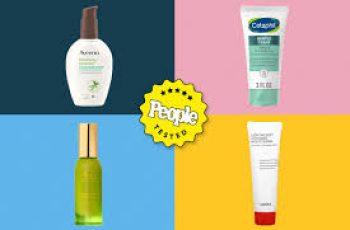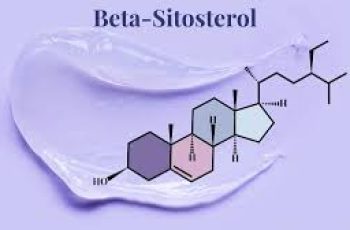
Navigating Safety in Skincare: Benzene Contamination in BPO Products
The recent discovery of benzene contamination in several benzoyl peroxide (BPO) acne treatments has highlighted significant concerns about the safety of over-the-counter (OTC) skincare products. This discovery has ignited widespread discussion about the effectiveness of the U.S. Food and Drug Administration’s (FDA) regulatory framework and the essential need for more thorough and transparent safety testing in the skincare industry. Benzene, a known carcinogen, was found in dangerously high levels in products from well-established skincare brands, prompting public health alarms and concerns about the long-term health impacts on consumers.
Benzoyl peroxide has long been a mainstay in acne treatments due to its ability to kill bacteria and reduce inflammation. However, the unanticipated presence of benzene in these products has created a new and alarming conversation about the unforeseen risks embedded within everyday skincare products. In this blog, we will dive deeper into the implications of this contamination, review the role of regulatory oversight, and discuss how the skincare industry can evolve to prioritize consumer safety more effectively. We will also explore the particular groups at higher risk due to this contamination and offer insights on how improvements in product safety and testing standards can help mitigate potential harm.
The Benzene Contamination Incident: A Wake-Up Call for the Skincare Industry
In an alarming investigation by Valisure LLC, an independent testing laboratory, it was revealed that several popular benzoyl peroxide-based acne treatments contained dangerously high levels of benzene. In some cases, benzene was found at concentrations up to 12 times higher than the FDA’s temporary exposure limits. Benzene is a known carcinogen with strong links to blood cancers like leukemia, making its presence in consumer skincare products an urgent public health concern. The fact that it was found in products commonly used for skincare adds a layer of complexity to our understanding of product safety. This discovery not only raises questions about the oversight of acne treatment products but also challenges the assumption that established, over-the-counter products are inherently safe.
For many, benzoyl peroxide is a trusted solution for treating acne, helping to clear skin by killing acne-causing bacteria and reducing the inflammatory response that leads to pimples and blemishes. Given its widespread use, this contamination has underscored the possibility of hidden and harmful substances in products that consumers rely on for their health and appearance. While benzoyl peroxide itself is generally considered safe, the inadvertent inclusion of benzene—something typically not associated with its formulation—signals the need for a more thorough investigation into the potential presence of harmful by-products or contaminants in a wide range of skincare treatments.
The Integral Role of Benzoyl Peroxide and Regulatory Oversight
The FDA has established guidelines for the concentration of benzoyl peroxide in over-the-counter acne products, typically allowing concentrations between 2.5% and 10% for safe use. These standards are designed to ensure that the benefits of the product outweigh any potential risks. However, what this regulatory framework does not account for are the unintended by-products, such as benzene, that can emerge during the manufacturing process or over the product’s shelf life.
Benzoyl peroxide itself is a potent oxidizing agent, which means it can break down over time, especially when exposed to heat, light, or moisture. This degradation process may result in the formation of harmful substances like benzene, which was not anticipated when the product was first formulated and approved. The revelation of benzene in BPO acne treatments thus raises important questions about the FDA’s regulatory mechanisms. While these rules do their best to ensure the safety of active ingredients, the occurrence of such contaminants suggests that a broader and more flexible testing methodology is necessary to anticipate the creation of hazardous by-products during the product’s life cycle.
In light of the benzene contamination, the skincare industry must reconsider the role of regulatory bodies like the FDA in overseeing consumer products. While the FDA plays an essential role in ensuring the safety of OTC skincare products, this incident highlights the limitations of existing regulations and underscores the need for more comprehensive, proactive safety measures that account for the complex chemical interactions that can occur during the production, storage, and usage of skincare treatments.
Health Risks of Benzene Exposure
Benzene is classified as a Group 1 carcinogen by the International Agency for Research on Cancer (IARC), with substantial evidence linking its exposure to an increased risk of cancer, particularly leukemia and other blood-related cancers. The toxic effects of benzene are well-documented, with both acute and chronic exposure linked to a variety of adverse health effects. Acute exposure to benzene can lead to dizziness, headaches, and other neurological symptoms, while long-term exposure has been shown to cause severe damage to the bone marrow, increasing the likelihood of developing blood cancers.
Of particular concern is the fact that benzene is often found in products that come into direct contact with the skin, such as skincare products. When applied topically, these substances can be absorbed through the skin and enter the bloodstream, leading to systemic exposure. This is especially problematic in the case of products that are used regularly or in large quantities, such as acne treatments. The potential for chronic, low-level exposure to benzene over time poses a significant health risk, particularly for individuals who may be using these products consistently as part of their skincare routine.
Given these risks, the discovery of benzene contamination in BPO products is a stark reminder that consumer safety cannot be taken for granted, even in products that are commonly perceived as safe. The impact of prolonged exposure to benzene through skincare products is still not fully understood, but it is crucial that additional studies are conducted to evaluate the long-term health effects on consumers, especially those who may be using such products on a daily basis.
The Importance of Rigorous Testing and Diverse Group Inclusion
The benzene contamination in BPO products emphasizes the critical need for more rigorous and comprehensive safety testing in the skincare industry. Traditional testing protocols often focus primarily on the active ingredients in a product, without taking into account the potential for contaminants or degradation products to form over time. As evidenced by the benzene issue, this limited approach to safety testing can leave significant gaps in the understanding of the full range of risks that a product may pose.
To ensure the safety of skincare products for all consumers, manufacturers must adopt more advanced testing methodologies. These should include not only tests for active ingredients but also for any unintended by-products that could form during production, storage, or use. Additionally, testing must account for how products interact with different skin types and how various populations may respond to the same product. This includes considering factors like skin tone, age, ethnicity, and underlying health conditions, all of which can influence how a product is absorbed and metabolized by the body.
In particular, research has shown that darker skin tones may have different reactions to certain chemicals compared to lighter skin tones, which underscores the importance of ensuring that product testing includes a diverse range of participants. For example, individuals with higher melanin levels in their skin may experience different absorption rates or exhibit heightened sensitivity to certain chemicals, necessitating a broader scope of safety testing to ensure products are safe for everyone, regardless of their skin type.
The Collaborative Path Forward
Addressing the challenges posed by product contamination and ensuring the safety of skincare products requires collaboration between manufacturers, regulatory agencies, independent laboratories, and consumer advocacy groups. Manufacturers must take responsibility for not only complying with existing safety guidelines but also for investing in more advanced testing techniques that can identify potential contaminants before products hit the market. Independent laboratories can play a crucial role by providing objective, third-party testing to help ensure that products meet safety standards and to raise awareness about potential risks.
Public health advocates and consumer groups must also remain engaged in this dialogue, advocating for more inclusive testing practices and promoting transparency within the industry. Their efforts can drive policy changes and industry-wide reforms that reflect the latest scientific findings, leading to safer and more effective skincare products for all consumers.
Ensuring Safety in Skincare
While the FDA sets standards for what is considered safe in skincare products, the recent benzene contamination incident has underscored the limitations of the current regulatory system. Ultimately, the responsibility for ensuring product safety lies with manufacturers, who must take the lead in implementing rigorous safety testing protocols and promoting transparency in their product formulations. The benzene issue serves as a powerful reminder that continuous innovation and improvement are necessary to protect consumers from unseen risks.
A Collaborative Effort
In the complex landscape of skincare product safety, collaboration is key. By fostering an environment that encourages cooperation between regulatory bodies, manufacturers, independent labs, and consumers, the skincare industry can create a future where safety is not just an afterthought but a fundamental principle of product development. Through innovation, inclusivity, and a commitment to comprehensive testing, we can ensure that the skincare industry prioritizes consumer health and well-being, turning incidents like the benzene contamination into opportunities for lasting change and progress.


